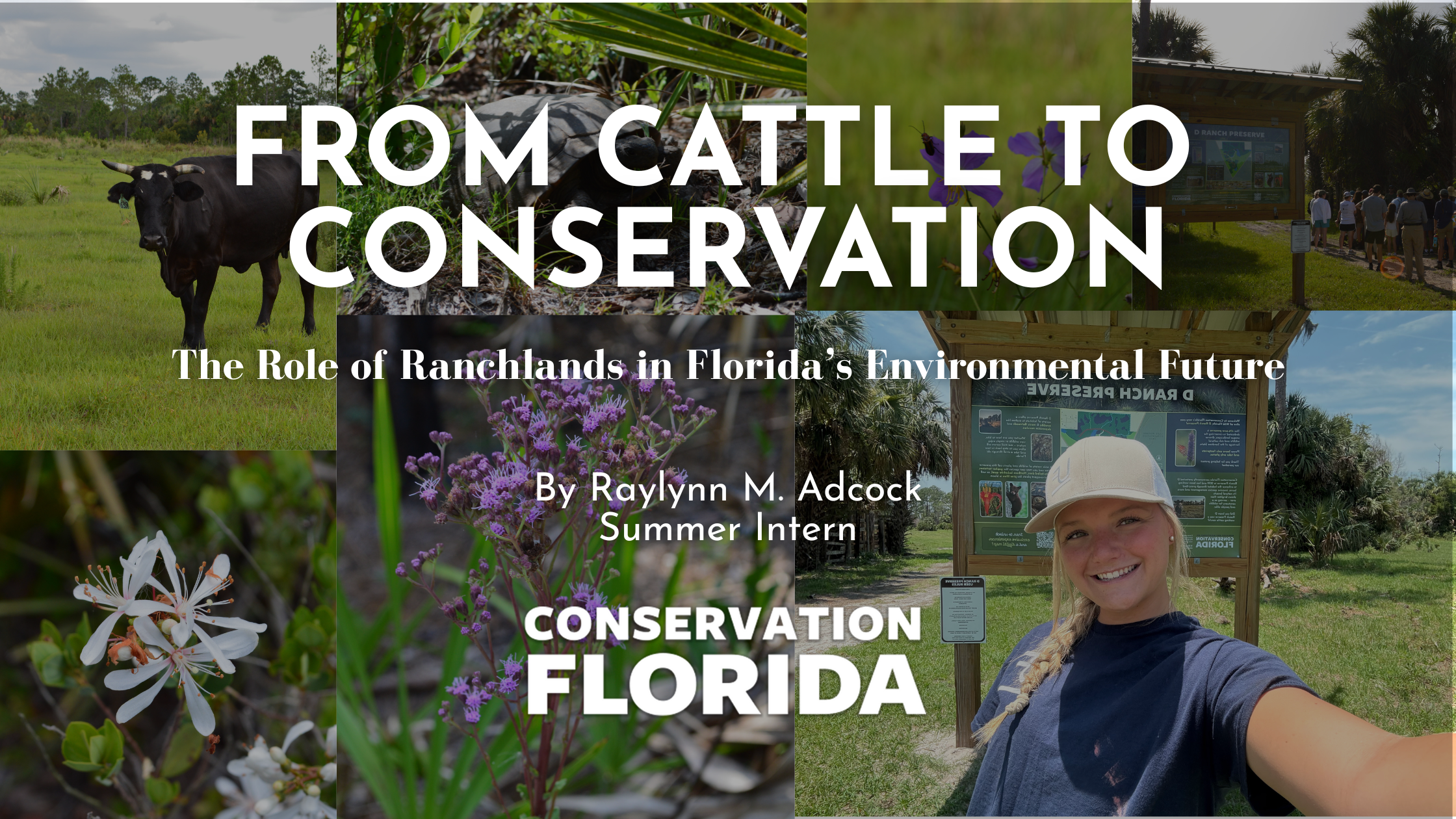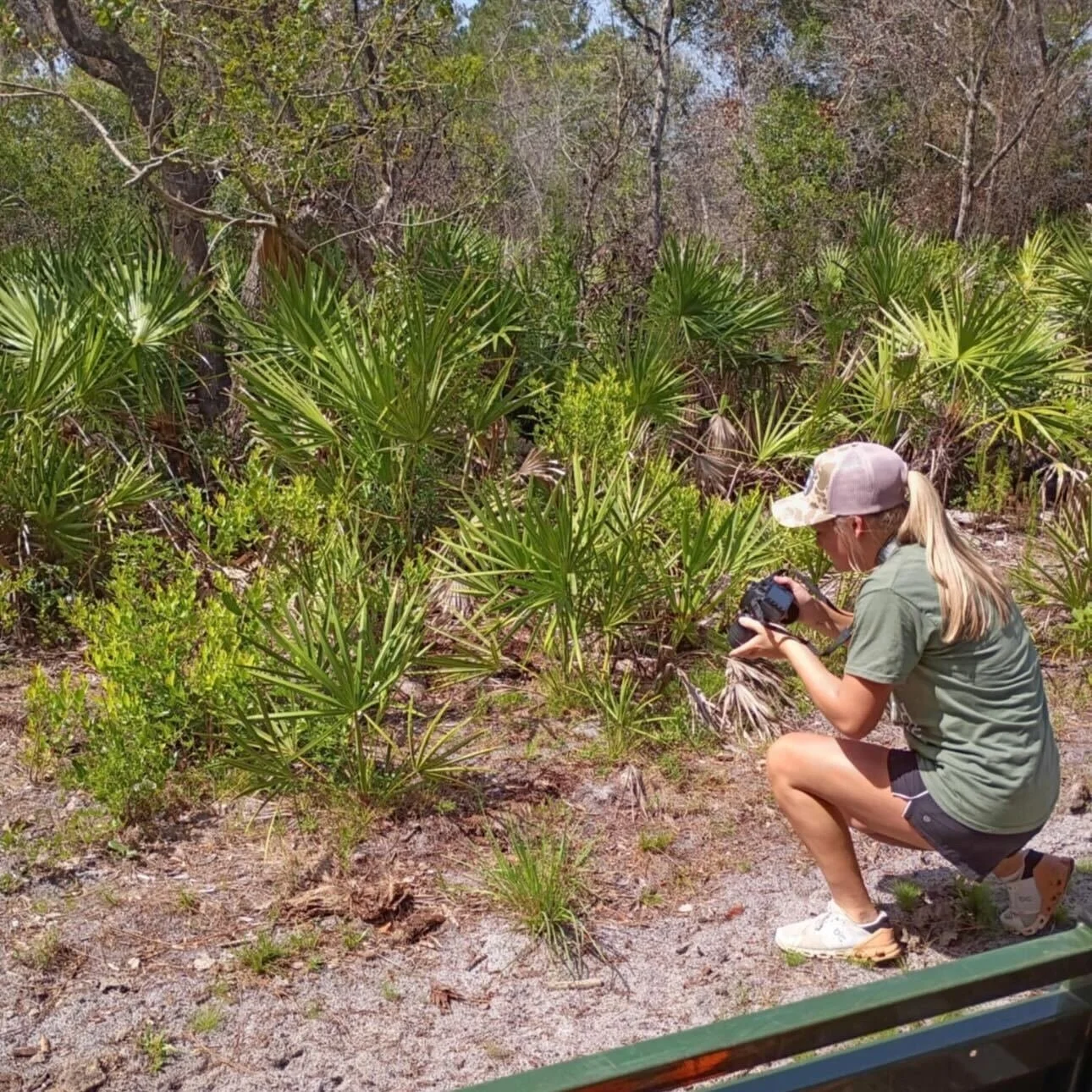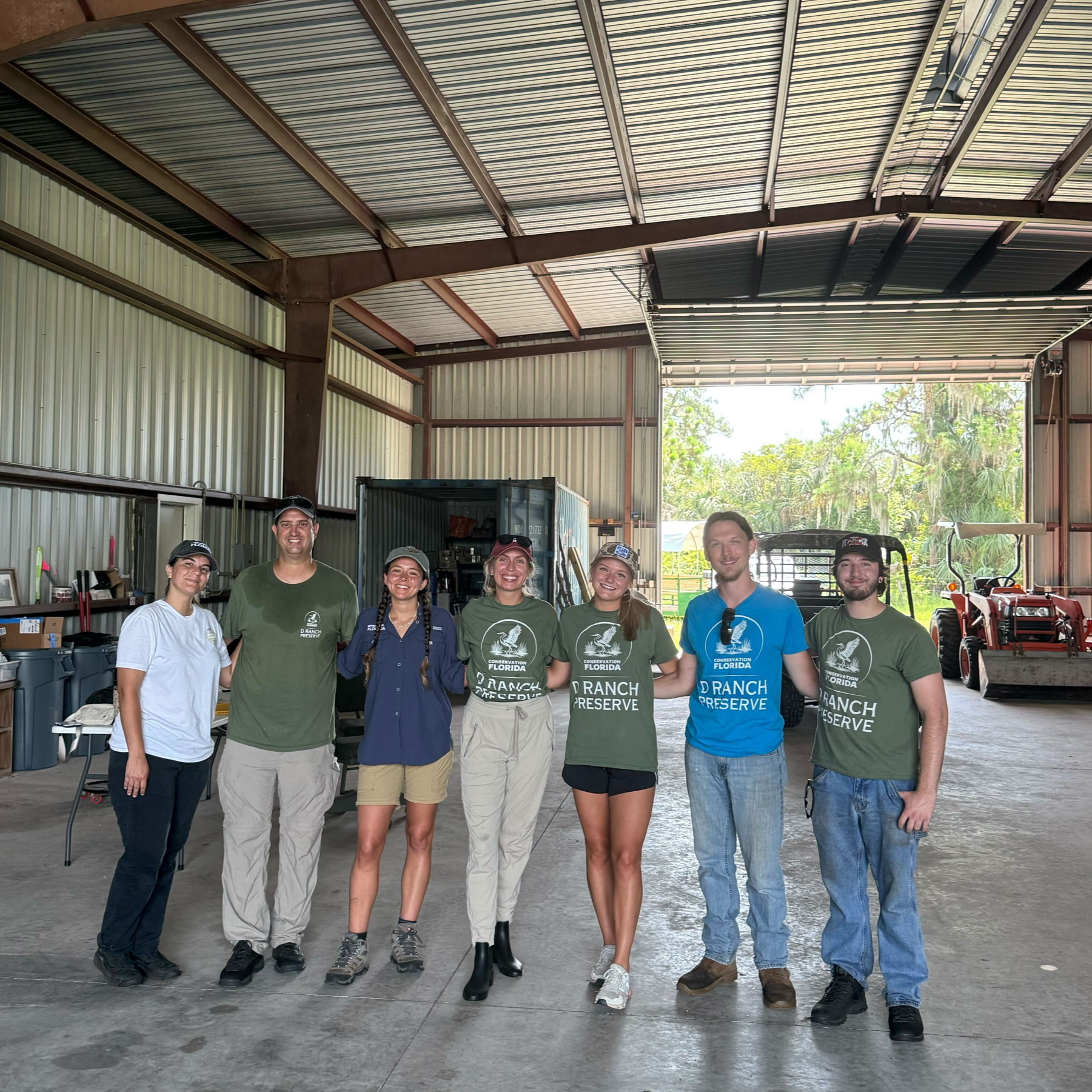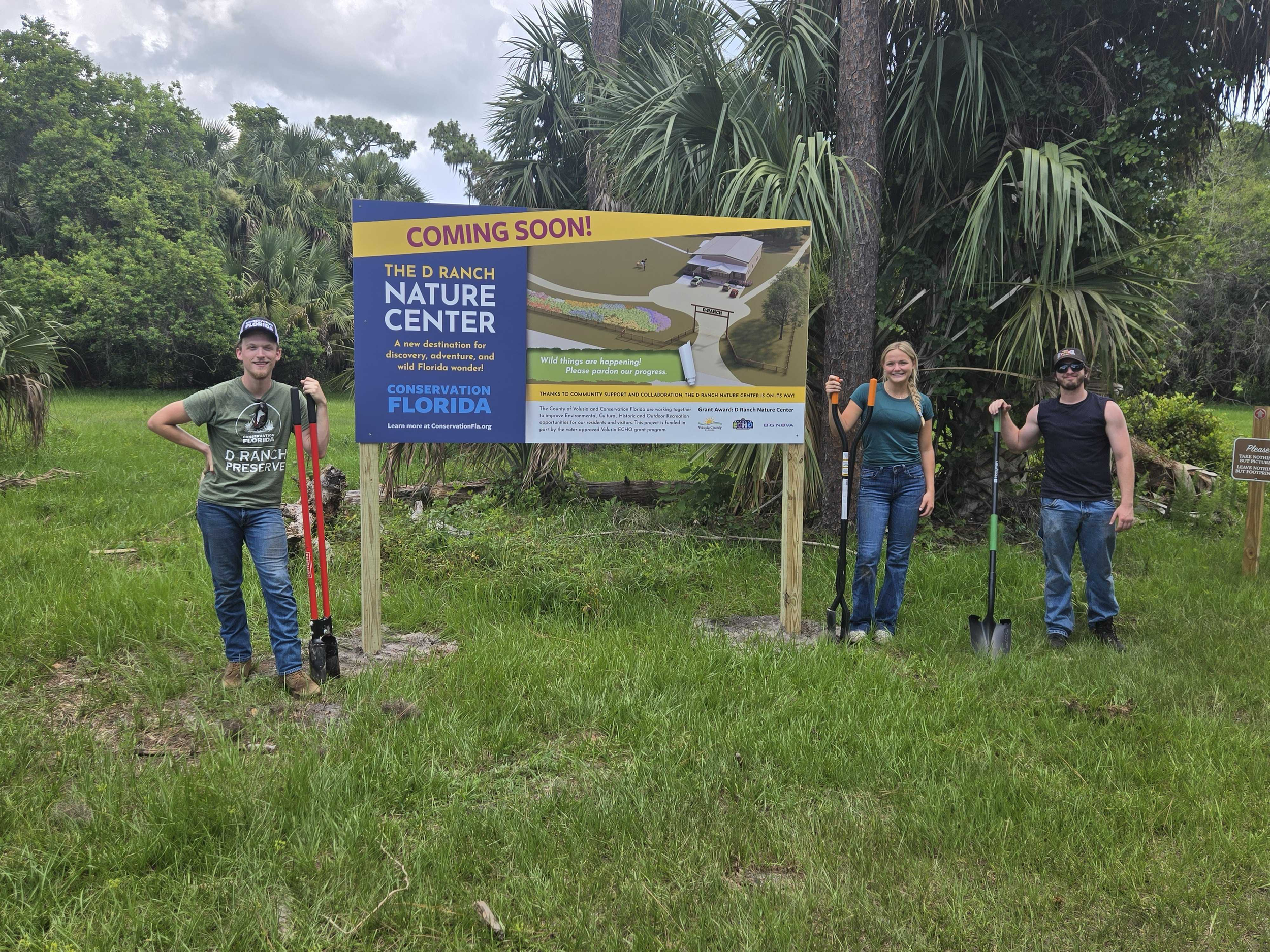From Cattle to Conservation: The Role of Ranchlands in Florida’s Environmental Future
by Raylynn M. Adcock, Conservation Florida Summer Intern
When most people picture conservation in Florida, they imagine wetlands, springs, or thick forests, typically not open pastures. As a student at the University of Florida studying animal sciences and agricultural communications, I’ve learned that agricultural lands are more than just farmland. Through my time walking pastures, watching cattle roam, attending events like the Florida Cattlemen’s Convention to talk with ranchers who’ve cared for these spaces for generations, and especially during my internship this summer with Conservation Florida, I’ve seen that these working lands are crucial to Florida’s environment, economy, and way of life.
Until 2019, when D Ranch Preserve was officially protected by Conservation Florida, the land was home to a cow-calf operation. At first glance, D Ranch Preserve may look like any other cattle operation or ranch, but spending time on the land has deepened my understanding of just how much it supports. Working at D Ranch Preserve has shown me firsthand what many already believed to be true: working lands aren't barriers to conservation, they’re the backbone of it. Across Florida, places like D Ranch Preserve are proving that agriculture and conservation can exist not only side by side but in direct support of one another for the betterment of saving wild Florida.
Florida’s ranchlands are more than just grazing space for cattle. They provide vital habitat for wildlife, help keep water clean by soaking it back into the ground, and act as natural buffers against the rapid spread of development. As more houses and highways continue to sprawl across the state, protecting places like D Ranch Preserve feels more pressing than ever.
“Florida’s ranchlands are more than just grazing space for cattle. They provide vital habitat for wildlife, help keep water clean by soaking it back into the ground, and act as natural buffers against the rapid spread of development.”
I’ve witnessed the balance firsthand. Early in the mornings, I see dew fresh on the grass and whitetail deer silently slip through the trees. Nearby, a gopher tortoise disappears into its burrow as a crowd passes it on our guided nature hike. Overhead, sandhill cranes call out in their distinctive voices and their bellowing calls echo through the wide-open sky. As I walk the trails at D Ranch, the smell in the air is a mix of sun-soaked grass and damp earth, leaving me with a warm and earthy feeling of appreciation for the land.
D Ranch sits along a natural path used by many animals to travel safely between ecosystems and fields. It’s like a quiet highway for wildlife, hidden in plain sight. This connection allows animals to roam freely and find food, mates, and shelter essential for their survival. Cattle still graze here too, which adds to the richness of this landscape and reminds us that working lands and conservation lands don’t have to be separate. We’re stronger when we work together, when ranchers, conservationists, and nature itself all play a role in protecting these places.
“Organizations like Conservation Florida work with landowners to protect their land for the future by keeping it natural and undeveloped, while still allowing it to be used for ranching or farming. ”
What stands out to me most about D Ranch Preserve is the way it redefines what conservation can look like. It’s not about taking people off the land or halting production. Instead, it’s about protecting the land’s ability to thrive, even as its role evolves. Organizations like Conservation Florida work with landowners to protect their land for the future by keeping it natural and undeveloped, while still allowing it to be used for ranching or farming. This means families can stay and care for their land, keeping it wild and open for the future.
As I continue learning and gaining experience, I’m more certain than ever that the world we live in today is one in which agriculture and conservation are not only compatible but essential partners. D Ranch Preserve shows what’s possible when we stop seeing these sectors working against one another. At D Ranch Preserve, raising cattle and protecting wildlife are one and the same because here in Florida, agriculture and conservation grow from the same soil. Even more so, the people who work this land are the original conservationists, caring for the soil, water, and animals that depend on it.
If we want to protect Florida’s future, we need to continue working together by listening, learning, and protecting the land that sustains us all.
in case you missed it:
About Conservation Florida:
Conservation Florida is an accredited, nonprofit land conservancy dedicated to conserving the Sunshine State’s water, wildlife, wild places, and connecting a functional Florida Wildlife Corridor. Since its founding in 1999, Conservation Florida has saved more than 40,000 acres, serving all 67 counties in Florida, by prioritizing strategic and evidence-based land protection, education, and advocacy.
Follow us on social media @conservationflorida.















